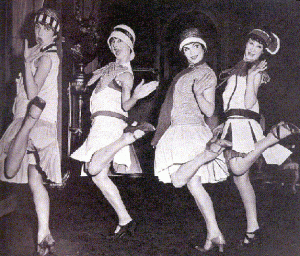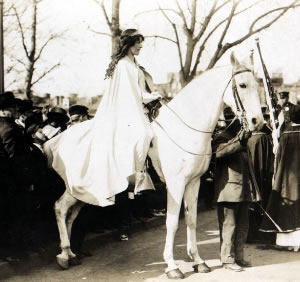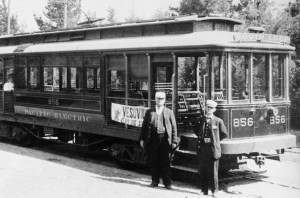
The term flappers in the 1920s referred to a “new breed” of young women who wore short skirts, bobbed their hair, listened to jazz, and flaunted their disdain for what was then considered acceptable behavior. Flappers were seen as brash for wearing excessive makeup, drinking, treating sex in a casual manner, smoking, driving automobiles and otherwise flouting social and sexual norms.
A quarter of a century ago, before Los Angeles became such a busy mart of trade, there was more sociability, more friendliness, more pleasant words and smiles on street cars in one day than there is now in a week, according to Edward H. Link, one of the oldest conductors in point of service, employed on the city lines.
“No woman wanted to bite you when you said, ‘Step forward in the car, please.’” he said. “No one threatened to call the police, telegraph the Governor and hang the motorman when the power went off. No one minded waiting a few minutes while the team of a big bay horses struggled to move the dray stalled in the mud on the track. But let a car get tied up in traffic now, and listen to the remarks” Look at the impatient tap-tap-tapping of feet on the floor and see the irritable looks on the faces of the passengers!”

Inez Milholland, mounted on Gray Dawn, ranks as one of the most important female equestrian leaders in American history, for it was on the back of a horse that she liberated her sisters from the sidesaddle, as well as helping obtain them the right to vote.
For years the system was considered by many to be “the vital cog in the city’s transportation system,” and according to author Steven Ealson, provided transportation for millions who enjoyed the streetcar so much they would “ride for miles simply for fun or for transportation to places of amusement.
“This isn’t peculiar to Los Angeles alone. It’s the same restless, nervous spirit pervading this world everywhere. The point has been reached, too, where the first one to get a seat preempts it, holds it, keeps it against all comers. ‘Finders is keepers,’ we used to say when kids, and ‘finders is keepers’ in street cars now. The only person likely to have a seat offered in a crowded car is the flapper and sometimes the aged, inform woman. But of the two, the flapper’s chances are best. Since the advent of woman’s suffrage, there has been a decided change in the attitude of men toward women street-car passengers.”

For years the system was considered by many to be “the vital cog in the city’s transportation system,” and according to author Steven Ealson, provided transportation for millions who enjoyed the streetcar so much they would “ride for miles simply for fun or for transportation to places of amusement.
Published in The Times, — November 16, 1924
Related articles
- You: Trolley buff guides others down the tracks of memory (latimes.com)
- Council OKs up to $352 million for downtown streetcar (latimesblogs.latimes.com)
- Cool Day in History: Woman Suffrage Parade of 1913 (coolrevolution.net)







